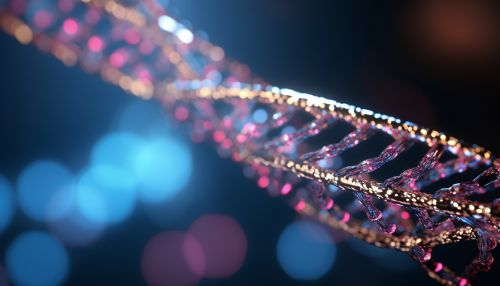Transcription Factors
Introduction
Transcription factors (TFs) are proteins that regulate the process of transcription, the first step in gene expression. They bind to specific DNA sequences and control the flow of genetic information from DNA to mRNA by promoting or blocking the recruitment of RNA polymerase. This article delves into the intricate details of transcription factors, their types, functions, and their role in cellular processes and diseases.


Classification of Transcription Factors
Transcription factors can be classified based on their structure, function, and the mechanism of action.
Based on Structure
Structurally, transcription factors are composed of one or more domains. These domains can be classified into families, such as the helix-turn-helix, zinc finger, leucine zipper, and helix-loop-helix families. Each of these families is characterized by a unique structural motif that facilitates DNA binding.
Based on Function
Functionally, transcription factors can be categorized into general transcription factors and specific transcription factors. General transcription factors are required for all transcription events and form part of the preinitiation complex. Specific transcription factors, on the other hand, bind to specific DNA sequences known as enhancers or silencers to regulate the transcription of particular genes.
Based on Mechanism of Action
Transcription factors can also be classified based on their mechanism of action into activators and repressors. Activators enhance the transcription of a gene, while repressors inhibit it.
Structure of Transcription Factors
Transcription factors are composed of several functional domains, each with a specific role. These include the DNA-binding domain, the transactivation domain, and the protein-protein interaction domain.
DNA-Binding Domain
The DNA-binding domain recognizes and binds to specific DNA sequences. The structure of this domain varies among different transcription factors, reflecting the diversity of DNA sequences they recognize.
Transactivation Domain
The transactivation domain is responsible for activating transcription. It interacts with other proteins in the transcription machinery, including RNA polymerase and other transcription factors, to initiate and regulate transcription.
Protein-Protein Interaction Domain
The protein-protein interaction domain allows transcription factors to interact with other proteins. This interaction can influence the function of the transcription factor, such as its ability to bind DNA or activate transcription.
Function of Transcription Factors
Transcription factors play a crucial role in regulating gene expression. They ensure that genes are expressed in the right cell at the right time and in the right amount, contributing to the maintenance of cellular homeostasis.
Regulation of Gene Expression
Transcription factors regulate gene expression by binding to specific DNA sequences and influencing the transcription of associated genes. They can either activate or repress transcription, depending on the context.
Cellular Differentiation and Development
Transcription factors are key players in cellular differentiation and development. They regulate the expression of genes that determine the identity and function of cells. For example, the transcription factor Oct4 is crucial for maintaining the pluripotency of embryonic stem cells.
Response to Cellular Signals
Transcription factors also mediate the cellular response to signals. For instance, in response to a hormone signal, hormone receptor transcription factors can change their conformation, bind to DNA, and regulate the expression of target genes.
Role in Diseases
Abnormalities in transcription factors can lead to various diseases, including cancer, diabetes, and autoimmune diseases.
Cancer
In cancer, mutations in transcription factors can lead to the overexpression or underexpression of genes that control cell growth and division, leading to uncontrolled cell proliferation. For example, the transcription factor Myc is often overexpressed in many types of cancer.
Diabetes
In diabetes, transcription factors play a role in the regulation of insulin production and glucose metabolism. Mutations in these transcription factors can disrupt these processes, leading to the development of diabetes. For instance, mutations in the transcription factor HNF1A can cause a form of diabetes known as MODY (Maturity Onset Diabetes of the Young).
Autoimmune Diseases
In autoimmune diseases, transcription factors can influence the expression of genes involved in immune responses, leading to an inappropriate immune response against the body's own cells. For instance, the transcription factor FOXP3 is crucial for the development of regulatory T cells, which suppress immune responses. Mutations in FOXP3 can lead to an autoimmune disease called IPEX syndrome.
